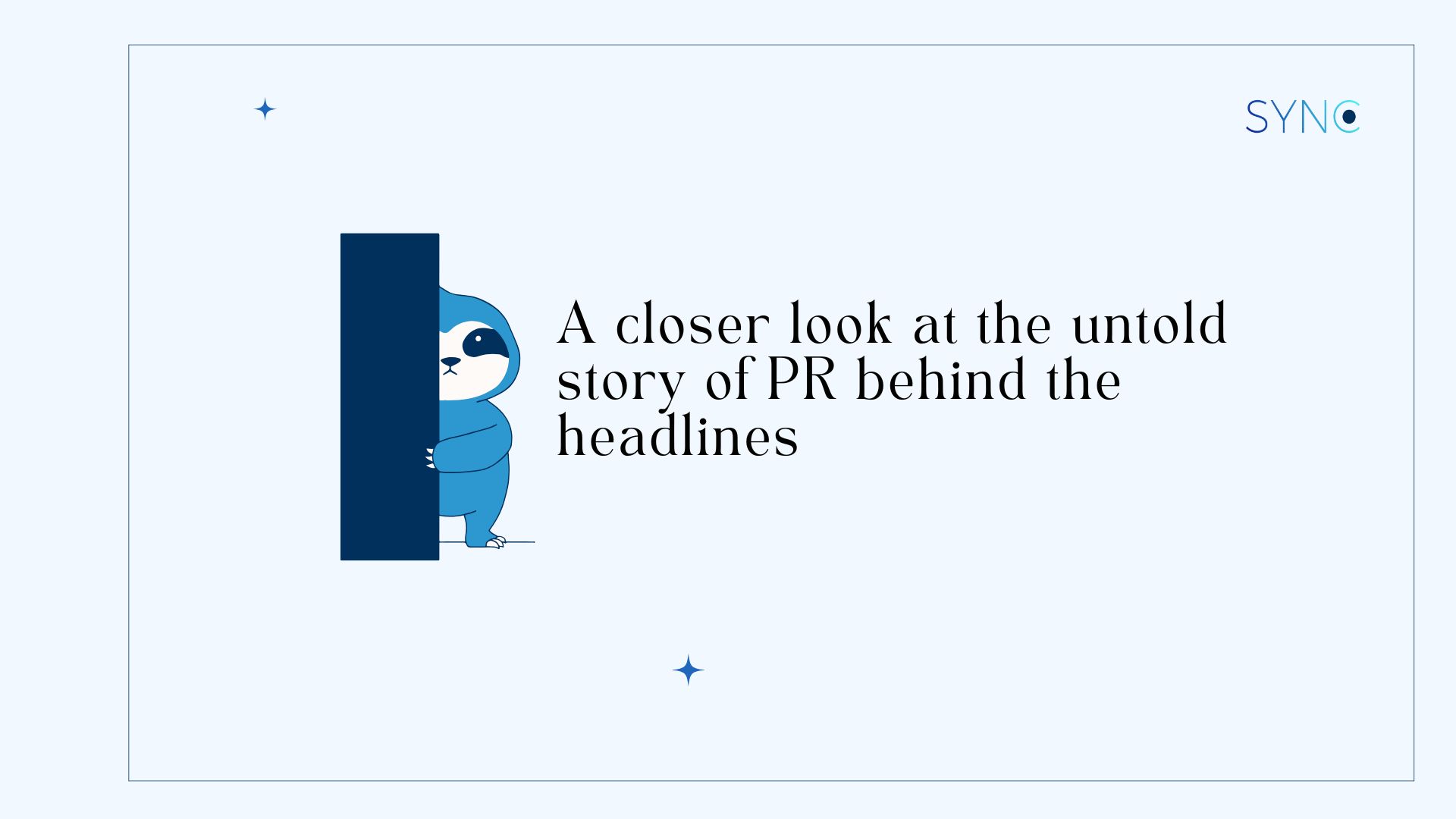When you see a glowing feature about a brand in your favourite publication or a CEO delivering a flawlessly poised interview on prime-time TV, it might feel like a natural byproduct of the company’s brilliance. But peel back the curtain, and what you’ll find is far from effortless. The reality? Each headline-worthy feature is the result of meticulous planning, relentless strategic thinking, and often, countless sleepless nights fuelled by coffee and adrenaline.
Public relations is a complex ecosystem where every piece matters. Behind that seemingly seamless coverage are public relations (PR) professionals poring over analytics, trending topics, anticipating questions, and crafting narratives that don’t just inform but resonate. It’s not a glamorous process. It involves long hours of research, countless iterations of pitches and releases (if you think “final_v7_really_final_this_time” is the last draft, think again!), and most importantly, a profound understanding of how the media works.
Think of it like organising a perfect wedding for a couple with wildly different tastes. You need the right timing, the perfect details, and a story that makes it all come together without anyone noticing the chaos behind the scenes.
Welcome to the untold stories of media relations, a world where pitches are carefully refined, relationships are built through trust (and coffee), and follow-ups require just the right balance of persistence and patience to get noticed. Let’s dive in!
The art of the perfect pitch
Think of a media pitch as the first impression at a high-stakes meeting. It’s your chance to capture attention and make a connection, but you only have seconds before the recipient moves on to the next shiny thing in their inbox. A good pitch doesn’t just sell a story; it frames the narrative in a way that aligns with the journalist’s beat, current trends, and their audience’s interests.
Crafting the perfect pitch takes time. It requires researching the journalist’s past work, tailoring the angle to their preferences, and finding the right hook. For instance, pitching a tech product isn’t just about its features, it’s about how it solves a problem that resonates with readers. PR professionals dig deep to uncover those angles, like detectives uncovering hidden clues.
And then there’s the writing process itself. A single pitch can go through countless drafts, each one fine-tuned for tone, brevity, and impact. It’s not unusual for a pitch to live through file names like “Pitch_v1,” “Pitch_final_v3,” and eventually, “Pitch_final_final_approved_v5.” A PR professional’s folder is a graveyard of drafts that didn’t make the cut, each one a step closer to the perfect pitch.
Friendships and follow-ups
Media relations isn’t just about pitching stories; it’s about creating lasting relationships with journalists and editors. Trust is the foundation of these connections, and it’s built over time through consistent effort, mutual respect, and a genuine interest in each other’s work.
To build these relationships, PR professionals need to go beyond sending the occasional pitch. It involves reading a journalist’s articles, engaging with their social media, and remembering key milestones in their career, like congratulating them on a recent award or promotion. These small, personalised gestures help PR professionals stand out and show that they’re invested in the journalist’s success, not just in getting coverage.
But relationship-building alone isn’t the end-all. Having a strong connection doesn’t automatically mean a journalist will accept your pitch. Remember, their inbox is probably filled with pitches from other PR pros —many of whom may have established relationships of their own. That’s why follow-ups are just as crucial.
After sending a pitch, a well-timed follow-up serves as a gentle reminder of why your story is a good fit for their audience but thread lightly, because timing is everything! Too soon, and you risk appearing impatient; too late, and your pitch may be forgotten. A simple follow-up —whether it’s a quick check-in or an updated angle— can keep your story top of mind. Thoughtful follow-ups show respect for the journalist’s time while reinforcing the value your pitch offers.
When a journalist knows you’re reliable, considerate, and in tune with their needs, they’re far more likely to take your call, consider your pitch, or collaborate on future stories. Media relations isn’t about securing quick wins; it’s about building relationships that lead to sustained success for both sides.
PR under pressure
While media relations is mostly about building connections and getting your story out, it’s also about handling the inevitable bumps in the road— and when things go wrong, the ability to manage a crisis can make or break a brand.
Take KFC’s “FCK Bucket” incident in 2018, for example. After a supply chain issue left many of its outlets without chicken, the brand faced massive public backlash. However, their quick and witty response —acknowledging the mistake with an ad featuring an empty bucket and the letters “FCK” instead of their logo— turned a disaster into a PR win. But this kind of response doesn’t just happen by accident. It’s the result of well-established media relationships, a clear understanding of public sentiment, and knowing how to communicate the message effectively. KFC’s media team had already built the trust of the press, ensuring they could get their message across quickly and creatively.This kind of creative and timely crisis management is what separates the pros from the rest. A well-timed, well-executed crisis response can turn a brand’s worst moment into a victory. And most importantly, it reinforces why media relations should be left to the pros!
Want expert help in securing powerful media coverage for your brand? Contact us at hello(a)syncpr.co – we’ll handle the PR, so you can focus on what you do best.

